The road to nirvana |
|
My journey into Photography, Horology, and Audiophilia |
Audio Hungary Qualiton X200 integrated tube amplifier
December 01, 2021
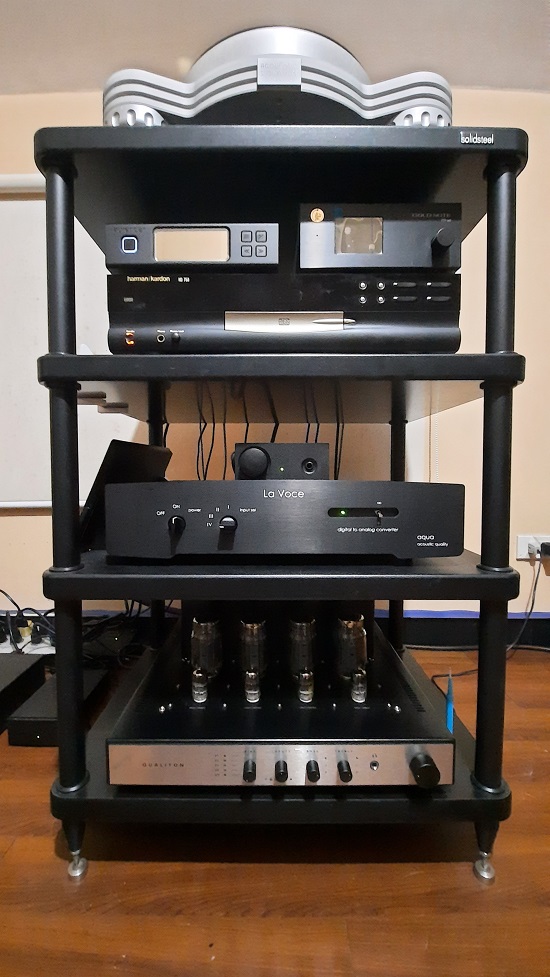
A few days ago, I ended a long and ardous process of acquiring the "end-it-all" amplifier for my main system. I finally embraced tubes again after abstinence for nearly 2 decades. The Audio Hungary Qualiton X200 integrated tube amplifier is not going back to the dealer.
Unboxing
The package is double boxed and heavy, the unit alone is 23 kg. Opening up the external thicker box revealed the Audio Hungary marked inner box.

Opening up the inner box revealed the goodies. The packaging I have to say, is well executed for proper protection of its contents. The items inside the cutout are the gloves, plastic screwdriver, and power cord which is Euro plug.
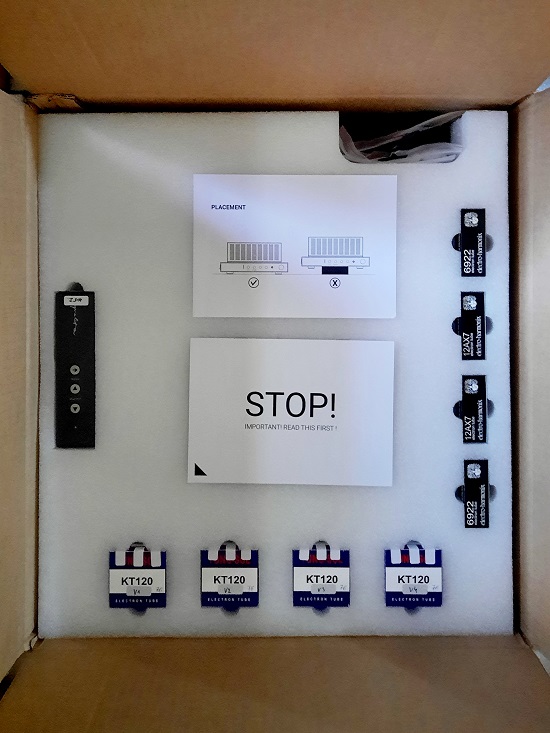
I'm excited! I already read the user's manual (downloadable from the manufacturer's website) as the usual part of my research but I still scanned the installation guide. Hauling the unit up the loft required some stability and strength, but so far so good, they're now on the floor to complete the assembly.

I didn't use the supplied white gloves as I have my own that features some kind of a rubbery grip which I thought is more appropriate for handling tubes. The power tubes have marks on the box to indicate where they should go (V1, V2, V3, V4 positions). The documentation is very clear about this.
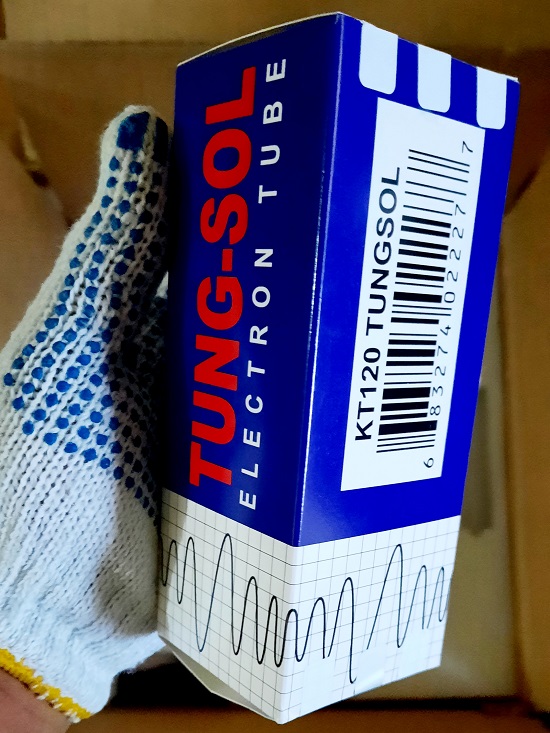
Finally, all tubes are in and now ready to be powered up and biased. The brand of tubes that came with the package are obvious from their boxes so there's no need to describe them anymore.

Let me share the front and rear photos before applying power.
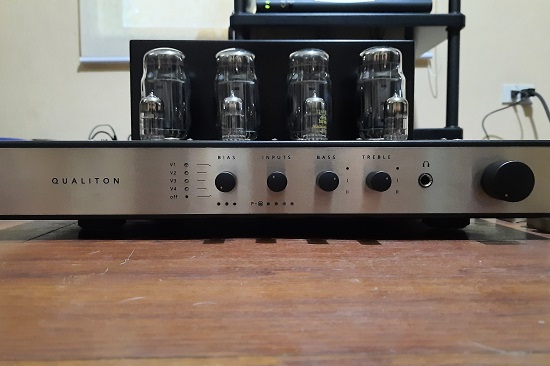
The graphics printed on the transformer cover is not accurate but we'll come to that later.
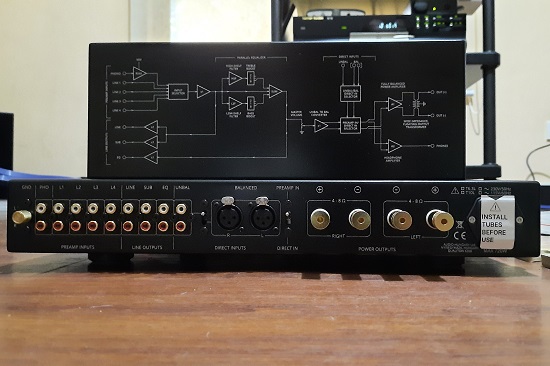
Specifications:
The full specifications of the X200 can be found here, but I'll summarize some key points.
- 100 watts per channel into 8 ohms
- Four (4) line-level single ended inputs
- One (1) MM phono input
- One (1) variable single ended output marked "SUB"
- One (1) fixed single ended output marked "LINE"
- One (1) equalized fixed single ended output marked "EQ"
- One (1) fully differential balanced direct input
- One (1) single ended direct input
- One (1) headphone output (6.3mm)
Initital impressions
I was still in audition mode (the Gryphon Diablo is the other product) when I made these notes.
With Scansonic MB3.5B
- Fantastic mid-range, subjectively have the upper hand against the Diablo 120 in terms of bloom and "mid-range magic." The Diablo 120 is superb but the X200 has a different presentation that is drawing me in.
- Morse, Portnoy, and George Baker Street, pretty good! Not as punchy and weighty as the Gryphon but there appears to be more bass (low damping factor?) It wasn't laggard or bloated, but not as "anaconda vise" tight as the Diablo 120.
- Soundstage and imaging is back with the MB3.5B in its original position (optimized for the H190). I spent some time trying to position the speakers for the Diablo 120 so that I will get a soundstage that will at least match the Hegel H190, but I failed. Too early for final judgement about the holographic soundstage, so I'll let this slide for now.
- Very silent with some tube noise at maximum volume, excellent job from Audio Hungary.
- If the X200 plays BABYMETAL to my satisfaction, then I think I know the winner. But that will be tomorrow.
- Like the Diablo 120, the X200 at 80dB it sounds big, but in proportions I prefer.
- 9 o'clock volume position produces up to mid 70dB of loudness playing Freeway Philharmonic's Sonic Detour from iFi Zen DAC single ended output.
- Surprisingly likeable with symphonic metal despite the so-so mastering from Nuclear Blast and Frontiers Srl, one click of the treble boost and it gives the edge to make the sound the right mix for me.
- BABYMETAL on vinyl sounded great, and that's a big plus for the X200. Both H190 and surprisingly the Gryphon didn't do too well with BABYMETAL which is not saying it sounds bad but it's just "not there." Hard to explain.
With Magnepan 1.7
- Once more the mid-range magic is carried over to the Maggies.
- I really like the resolution, soundstage, timbre, and tone of the X200 which the Maggies convey delightfully while retaining the latter's characteristics.
Operations
Well, bare minimum, just the volume adjustment and mute is accessible via the RF (take note of that, old school radio frequency) remote control. My Logitech Harmony remote is inutile for this purpose because modern remotes are IR. I lose the couch-potato luxury of switching between different inputs, but if I can stand up every now and then to flip records then switching to different inputs is no different. I have to say that the remote control is very old school and can really hurt people and break things. The manuals said there is no battery included so I ordered from Lazada, but when I removed the cover there is one, although it has discharged already. The battery is also not your typical A, AA, AAA but rather the 12V 23A type.
Input selector, two position bass and treble boost (no cut, but makes sense) are all manual. Get your ass off that couch, or Ogawa massage chair in my case.
Bias adjustment is traditional with front accessed bias pots and shared array of blue, green, and red LEDs (not individual array for each tube like the Octave V70SE). Blue indicates low bias, green is about right, and red is too high.
To begin the bias procedure, follow the steps below:
- let the X200 run at idle for 10 minutes
- rotate the VOLUME knob to the minimum
- make sure the rear toggle switch PREAMP IN is active
- rotate the BIAS knob to position V4 and adjust the bias
- repeat procedure 4 for V3, V2, V1.
- turn the BIAS knob to off position.
The DOGE 10 still has the most sophisticated automated bias adjustment I know, although PrimaLuna owners might contest that the adaptive auto-bias is the way to go.
There is no time delay and the music starts the moment the filaments light up in headphone mode. In speaker mode, there is a slight delay of less than 10 seconds.
There are two toggle switches at the back to select normal mode (preamp in)or power amp mode (direct in), and whether to use unbalanced or balanced (XLR) input in power amp mode, other than those there are no options for triode/ultralinear, low/high feedback, and other complications.
The headphone output
Because it is bedtime already, I don't want to bother my neighbor so focus switched to the headphone output.
The X200 is capable of 300 mW at 32 ohms according to the manual, which should work well with my HIFIMAN HE400i, barely! The HE400i is demanding more power even at 3 o'clock volume, however the vintage AKG K240 Studio at 55 ohms is being driven at satisfying levels. The difference between 93dB and 105dB sensitivity is well exhibited here, or perhaps dynamic vs. Planar drivers?
Do not be an idiot by removing the headphone plug without setting the volume to the minimum and risk destroying your speakers.
The Sony WH-1000MX3 sounds pretty good in active mode (47 ohms) but somewhat lacking in passive mode (16 ohms).
All my IEM that includes Audeze LCDi3, Sony XBA-A2 are driven at defeaning level, i.e., beyond 80dB which is my loudness limit.
The different drivers and sonic characteristics of the head/ear phones varies widely and this is where I began to appreciate the bass and treble boosts.
Having said that, is it worth burning four KT120 tubes for this purpose? The X200 does not have an amp off (or stand by) feature like the Octave V70SE does.
Go to Part 2